Although riding a motorcycle can be thrilling, there is a certain amount of risk involved. Motorcyclists should always put safety first, and one of the most crucial safety precautions you can take is to always wear a helmet. Full-face, modular, and half helmets are just a few of the many different styles of motorcycle helmets that are offered on the market. In this article, we'll examine motorcycle half-helmets in more detail.
What are Motorcycle Half Helmets?
Due to their simplistic design, motorcycle half helmets are also known as "brain buckets." They provide the least amount of head protection and are typically preferred by riders who want a light, comfortable helmet with the most airflow and visibility possible. Half helmets typically consist of polycarbonate or fiberglass and are available in a variety of hues and patterns.
Benefits of Motorcycle Half Helmets:
The lightweight construction of motorcycle half helmets is one of their main advantages. Wearing them is more comfortable as a result, particularly on long rides. Additionally, compared to full-face helmets, half-helmets offer a wider field of vision, which can be crucial for riders who need to be able to see their surroundings clearly. Half helmets are additionally frequently less expensive than full-face helmets, making them a more cost-effective choice for riders on a tight budget.
Half helmets have some advantages, but they could also have some disadvantages. They offer only rudimentary protection in the event of an accident because they only cover the top of the head. In the event of a collision, riders who choose to wear half helmets run a higher risk of suffering head injuries. Furthermore, because half helmets don't cover the face, riders may be at risk for facial injuries in the event of an accident.
Half helmets for motorcycles can be a good choice for riders who value visibility and comfort. However, it's crucial to remember that compared to other types of helmets, half helmets provide less protection. Therefore, before selecting a helmet, riders should carefully consider their needs and priorities. Regardless of the kind of helmet you select, always keep in mind that wearing one will help prevent serious injuries in the event of a crash.
Wearing a helmet is among the most crucial safety precautions a motorcycle rider can make. In this article, we'll take a closer look at the importance of wearing helmets while riding motorcycles.
Protection from Head Injuries:
The protection it offers for the head is the helmet's most important advantage. A helmet can lessen the impact of an accident and help to avoid severe head injuries. One of the most frequent and potentially serious types of injuries in motorcycle accidents is head injuries. A rider's life may be saved and the risk of a fatal head injury reduced significantly by wearing a helmet.
Defending against the elements:
Helmets can shield riders from the elements in addition to protecting them from impact injuries. Helmets can aid in protecting motorcycle riders from the elements, which they may be exposed to while riding due to wind, rain, and other weather conditions. This can make riding safer and more enjoyable by reducing distractions and enhancing rider comfort.
Legal Requirements:
The wearing of a helmet while operating a motorcycle is mandated by law in many jurisdictions. A rider's license may be suspended or fines imposed for failing to wear a helmet in some circumstances. Following the law and donning a helmet can both help riders avoid legal repercussions and encourage safer riding practices.
Setting a Good Example:
Setting a good example by donning a helmet while operating a motorcycle. When riders wear helmets, they demonstrate that they value their own safety and inspire other drivers to follow suit. Riders can contribute to a safer riding environment by setting an example of responsible riding.
One of the most crucial safety precautions a motorcycle rider can take is to wear a helmet. Helmets shield riders from the elements, prevent head injuries, and encourage safer riding practices. Riders can choose to lower their risk of injury and set a good example for others by choosing to wear a helmet every time they ride. When riding a motorcycle, always wear a helmet to help protect both you and other drivers.
Motorcycle racing first gained popularity in the early 1900s, which is when motorcycle helmets first appeared on the scene. The first helmets had a simple design and were made of leather. As helmet technology advanced, riders were better-protected thanks to more efficient designs. The half helmet, also referred to as a "skull cap" or "beanie" helmet, was one type of helmet that appeared during this evolution.
A minimalist approach to head protection, the half helmet's design covers only the top of the head, leaving the face and ears exposed. It resembles a hard shell and is held in place by a chin strap on top of the head. Since its introduction in the early 1930s, the half-helmet design has grown in popularity among riders who favor a less substantial helmet.
Half helmets became increasingly common during the 1950s and 1960s, a time when motorcycle culture was at its height. Riders who preferred a more understated appearance and feel while riding their motorcycles wore them. Additionally, a lot of riders liked how half helmets offered more ventilation than full-face helmets, making them more comfortable to wear on extended rides.
The popularity of chopper motorcycles was one of the most important factors in the rise of the half helmet. Choppers were custom-built bikes with only the bare minimum of features, frequently with a minimalistic design. Half helmets are a common option for chopper riders because they complement the style of the vehicle well.
Half-helmet use became more widespread in the 1970s and 1980s as motorcycle safety regulations were put in place. However, many riders opposed the new rules because they felt that they restricted their freedom. Half helmets were regarded as a middle ground that allowed riders to adhere to the law while still feeling free and independent.
Half helmets have become increasingly popular recently as more manufacturers release new styles and materials that offer better comfort and protection. Modern half-helmets have a simple appearance, but they are equipped with cutting-edge safety features like impact-absorbing liners and reinforced shells. They are a popular option for riders of all stripes because they come in a variety of patterns and hues.
Half helmets have remained a popular option for riders who value their sense of freedom and independence while driving despite the controversy surrounding motorcycle safety regulations. It will be interesting to see how the design of half helmets develops and adapts to meet the needs of riders as motorcycle technology continues to advance.
They might not offer the same level of protection as full-face helmets, but they are still an excellent choice for riders who value comfort and mobility over maximum protection. In this article, we will discuss the features of motorcycle half helmets.
Low-Profile Style
The low-profile design of motorcycle half helmets is one of their key characteristics. Because of their sleek and small design, these helmets don't add much weight or bulk to the rider's head. Greater mobility and freedom of movement while riding are made possible by this design. Without any helmet interference, riders can easily turn their heads to check their blind spots.
Lightweight
The lightweight design of motorcycle half-helmets is another important aspect. Typically, these helmets are constructed from lightweight materials like polycarbonate, carbon fiber, or fiberglass. Due to their design, they are not only comfortable to wear for extended periods of time but also aid in easing the rider's neck and shoulder pain and fatigue.
Ventilation
Half helmets are no exception when it comes to motorcycle helmets when it comes to ventilation. To help circulate air and keep the rider cool and comfortable, these helmets frequently have a number of vents and air channels. Additionally, proper ventilation aids in lowering visor fogging, which enhances riding visibility.
Snug Fit
A proper fit is essential for any motorcycle helmet, and half helmets are no exception. These helmets should fit snugly around the head without any gaps or spaces. A snug fit not only helps to keep the helmet in place during a crash but also reduces wind noise and turbulence while riding.
Removable Visor
The visor on many motorcycle half-helmets is detachable. Riders can personalize this feature to change the amount of protection they want in their helmets. The visor can be removed for a more simple appearance or added for more sun and wind protection.
DOT Accreditation
Finally, it's crucial to select a DOT-certified motorcycle half helmet. The Department of Transportation's safety requirements for the helmet have been tested and confirmed by this certification. Helmets with DOT certification provide some level of crash protection and can help lower the possibility of fatalities or serious injuries.
In conclusion, riders prefer motorcycle half helmets because of their low-profile, lightweight design. In spite of their scant coverage, these helmets still offer some level of protection in the event of a collision. To make sure you get a helmet that is both comfortable and safe, it's crucial to take into account factors like fit, ventilation, and DOT certification when choosing a motorcycle half helmet.
Washable and Removable Liner
Half-helmets for motorcycles have a liner that can be taken out and cleaned. After a long ride, riders can use this feature to remove the liner and wash it, keeping the helmet sanitary. Because the liner is removable, it is also simpler to upgrade or replace it for a better fit or greater comfort.
Various color and design choices
Half-helmets for motorcycles come in a variety of hues and patterns. Riders can now select a helmet that matches their personality and sense of style. Every preference can be satisfied by a motorcycle half helmet, which comes in classic black or vivid neon colors.
Affordable
Motorcycle half-helmets are typically less expensive than full-face helmets. For riders on a tight budget who still need some level of protection while riding, this makes them a fantastic option. They still offer some level of protection in the event of a crash, even though they might not offer as much protection as a full-face helmet.
Simple and Comfortable to Wear
Last but not least, motorcycle half helmets are made to be simple to put on and comfortable to wear. They are comfortable to wear for extended periods of time due to their lightweight construction and low-profile design. They are a practical choice for riders who frequently get on and off their bikes because they are simple to put on and take off.
Now, we will explore the basic design elements, different materials used, common safety features, advantages, and disadvantages of half helmets.
Basic Design Elements
Half helmets are typically made to be thin, low profile, and minimalist in appearance. They have a strap to hold the helmet in place, and they frequently cover the top of the head. To shield the rider's eyes from wind and flying objects, some half helmets also feature visors.
Different Materials Used
Half helmets can be made from a variety of materials, including:
Polycarbonate: This material is lightweight and durable, making it a popular choice for half helmets.
Fiberglass: Fiberglass is a strong and lightweight material that offers good impact resistance.
Carbon fiber: Carbon fiber is an extremely strong and lightweight material that is often used in high-end half helmets.
Common Safety Features
Although half helmets offer less protection than full-face helmets, they still come with some safety features, including:
DOT certification: This certification ensures that the helmet has been tested and meets the safety standards set by the Department of Transportation.
Impact-absorbing liner: The interior of the helmet is designed to absorb impact and reduce the risk of injury in the event of a crash.
Removable and washable liner: The liner can be removed and washed to keep the helmet clean and hygienic.
Advantages of Half Helmets
Lightweight and comfortable: Half helmets are typically lightweight and low profile, making them comfortable to wear for long periods.
Good visibility: With no chin or face protection, half helmets offer good visibility, allowing riders to easily check their blind spots and see more of the road.
Affordable: Compared to full-face helmets, half helmets are generally more affordable, making them an excellent option for riders on a budget.
Disadvantages of Half Helmets
Minimal protection: Half helmets offer less protection than full-face helmets, leaving the face and chin exposed.
Limited features: Half helmets typically have fewer features than full-face helmets, such as ventilation systems or built-in communication systems.
Noise and wind: With no chin protection, half helmets can be noisy and allow wind to hit the rider's face, leading to discomfort and fatigue.
Shortcomings of Half Helmets
The face and chin are exposed because half-helmets provide less protection than full-face helmets.
Limited features: Compared to full-face helmets, half helmets typically have fewer features, such as ventilation systems or integrated communication systems.
Half helmets without chin protection can be noisy and let wind hit the rider's face, making them uncomfortable and exhausting.
In conclusion, riders who value comfort and mobility over maximum protection frequently opt for half helmets. They are a great choice for riders on a budget because they are lightweight, low profile, and reasonably priced. They do not provide as much protection as full-face helmets, leaving the chin and face exposed. To make sure you choose a half helmet that is both comfortable and safe, it's crucial to take into account factors like materials, safety features, and advantages and disadvantages.
Any rider who values their safety and comfort on the road must choose the best motorcycle half helmet. When looking for a half helmet, it can be difficult to know what to look for because there are so many options available.
This article will go over some important things to think about when selecting the best motorcycle half helmet for you.
Safety Guidelines
Safety is the first and most crucial factor to take into account when selecting a half helmet. Look for helmets that adhere to the safety requirements established by organizations like the European Safety Standard, Snell Memorial Foundation, and the Department of Transportation (DOT) (ECE). These standards-compliant helmets have undergone testing and have received approval to offer sufficient protection in the event of an accident.
Comfort and Fit
The helmet's comfort and fit should be taken into account next. Too loose or too tight of a helmet can be uncomfortable and dangerous. Choose a helmet size that comfortably fits your head without being too tight after measuring your head. Look for helmets that have pads or straps that can be adjusted so you can get a perfect fit. To ensure maximum comfort during long rides, also take into account the weight and ventilation of the helmet.
Materials
The helmet's weight, toughness, and degree of protection will vary depending on the materials used to make it. Polycarbonate, fiberglass, and carbon fiber are just a few of the materials that can be used to create half helmets. Although polycarbonate helmets are the least expensive and lightest, they might not provide as much protection as helmets made of carbon fiber or fiberglass.
Design and Fashion
To accommodate different tastes, half helmets are available in a variety of styles and designs. Some riders favor a more traditional appearance, while others favor a helmet with a cutting-edge, contemporary style. Pick a helmet that fits your personality and sense of style, but don't sacrifice comfort and safety for style.
Price
A half helmet's cost can vary significantly depending on its construction, style, and features. Set a spending limit and look for helmets that are the best buys. Do not forget that a more expensive helmet might not always provide better protection, durability, or comfort.
To sum up, selecting the ideal motorcycle half helmet necessitates careful consideration of a number of factors, including safety standards, fit and comfort, materials, style and design, and price. Always put comfort and safety before style, and pick a helmet that fits your needs and budget. You can still experience the freedom and thrill of riding a motorcycle while wearing a high-quality half helmet that offers adequate protection and comfort.
First and foremost, it's critical to comprehend that each state has its own requirements for motorcycle helmets. As a result, it is essential to research the regulations in your state before riding a motorcycle. Motorcycle half helmets must generally comply with a few basic legal requirements.
The requirement that motorcycle half helmets adhere to the Department of Transportation's safety standards is one of the most significant legal requirements (DOT). This means that the back of the helmet must display the DOT symbol and be DOT-certified. Motorcycle helmets must adhere to a set of safety standards established by the DOT, including those for impact resistance, penetration resistance, retention system strength, and labeling requirements.
The requirement that motorcycle half helmets be properly fastened and secured is another significant legal requirement. The helmet should fit snugly on the head and the chinstrap should be tightly fastened. In the event of an accident, the helmet may not offer enough protection if it is loose or improperly fastened.
Additionally, when riding a motorcycle with a half helmet, some states mandate that the rider wear eye protection. This could be a face shield attached to the helmet, goggles, or eyewear. Once more, it's crucial to check your state's laws to see if eye protection is required.
Additionally, it is important to remember that some states have age restrictions for motorcycle riders who wear half-helmets. Riders under a certain age may be required in these states to wear a full-face helmet for additional safety.
In conclusion, riders who prefer a light, the minimalistic helmet may find that donning a motorcycle half helmet is a great option. However, it's crucial to comprehend and abide by your state's laws regarding motorcycle half helmets.
Verify that the helmet complies with DOT safety standards, is securely fastened, and satisfies any additional requirements for eye protection. You can ride safely and legally while wearing a half helmet if you adhere to these legal requirements.














